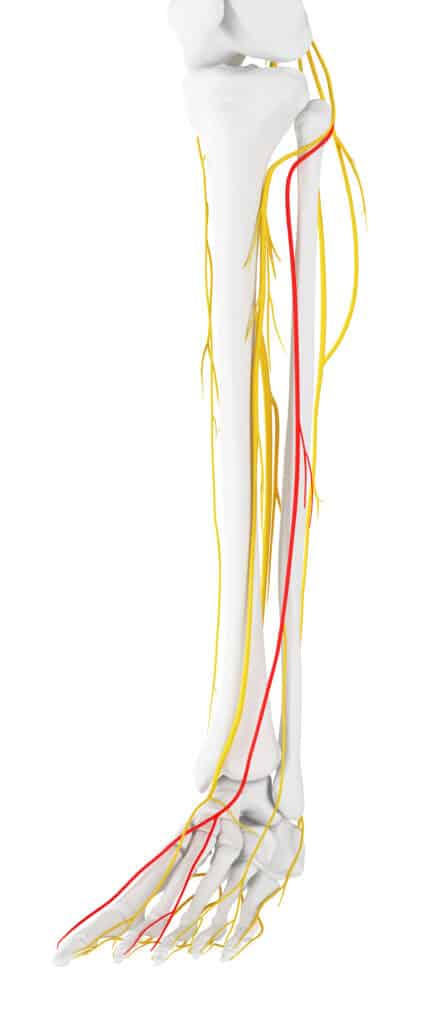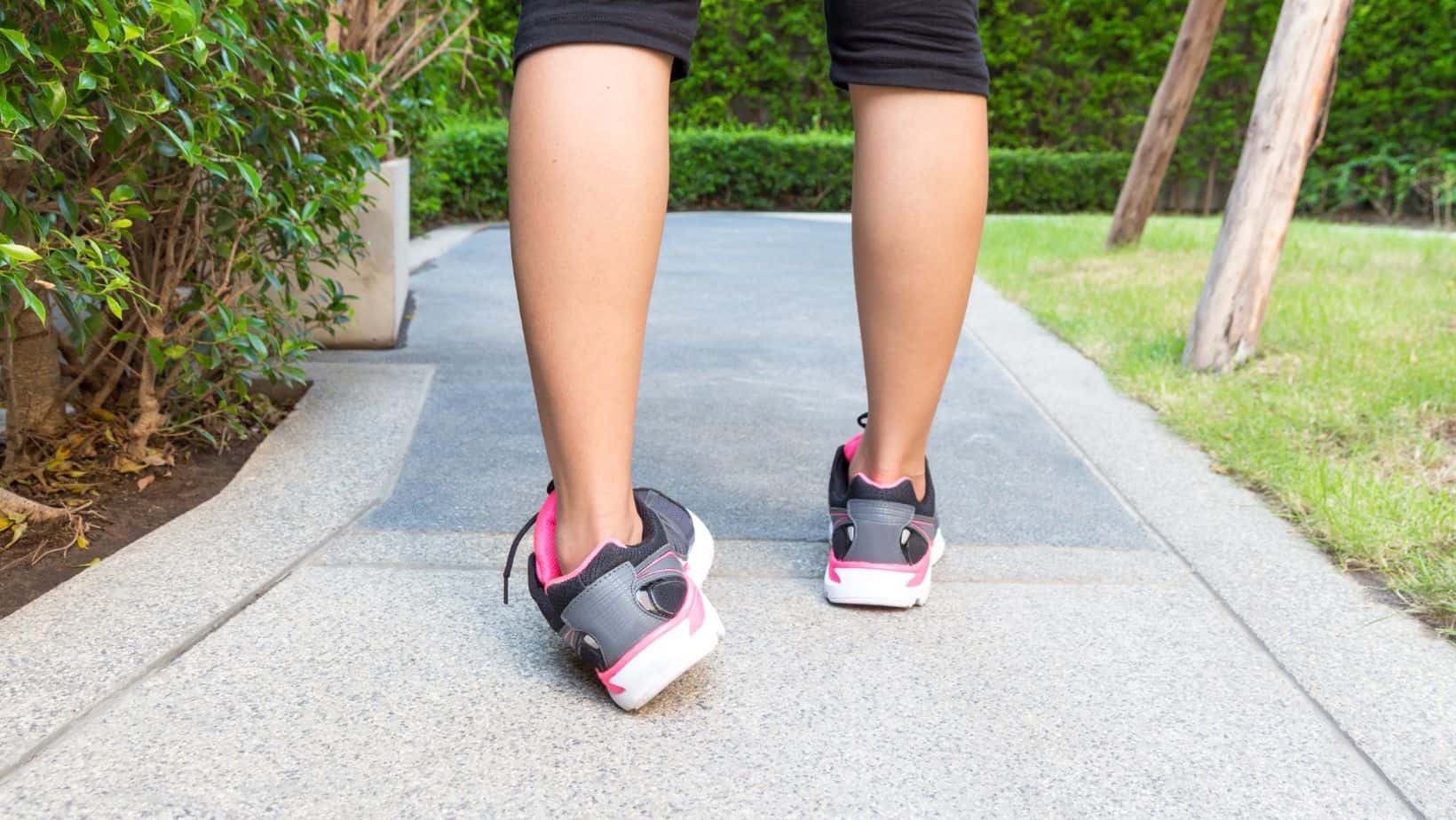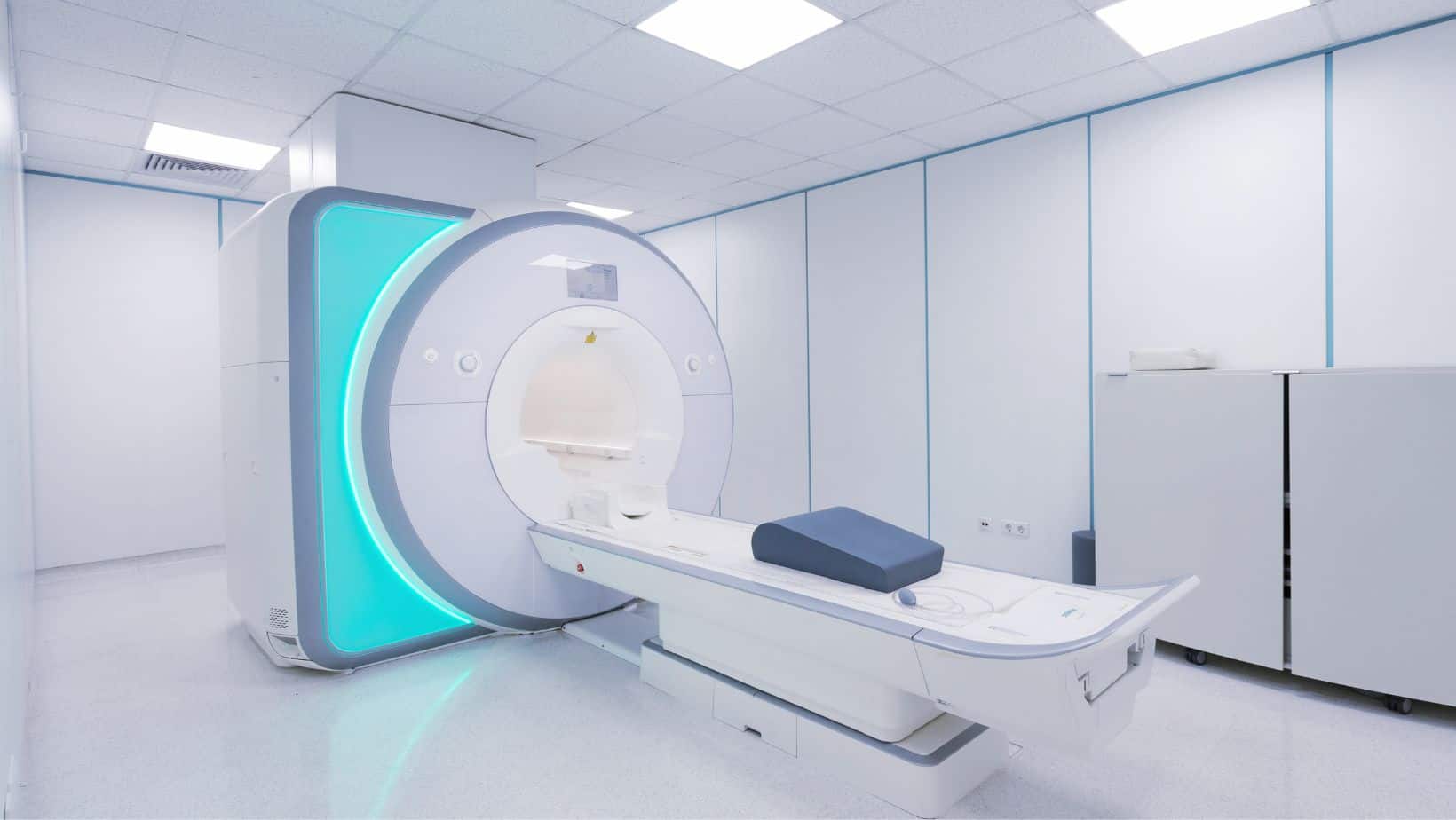Baxter’s Nerve Entrapment
Read More >
The Superficial Peroneal Nerve is a nerve branch from the sciatic nerve that begins just before the head of the fibula bone before descending downwards alongside the outer aspect of the shin, where is splits in two. One aspect continues its course along the lateral ankle while the other passes over the front of the ankle; combined, these two branches provide sensation to the lower shin, top and lateral foot.

Superficial Peroneal Nerve Entrapment symptoms include a burning sensation of pain, numbness and tingling on the outside of the foot or top of the foot.
Symptoms are often worse when sitting for long periods or at night.

Causes of Superficial Peroneal Nerve Include repetitive ankle sprains that overstretch the Superficial Peroneal Nerve leading it to become inflamed. Direct compression or trauma to the Superficial Peroneal Nerve at the head of the fibula or on the ankle.
Other causes include a fractured ankle, low back pain and compartment syndrome in the lower leg.
A Physical Therapist or Podiatrist can establish a clinical diagnosis based on a patient’s symptoms and clinical tests such as a modified SLR test and a Tinnel’s test.
It is often challenging to identify inflammation or irritation of the nerve on an MRI, while a nerve conduction study may be recommended in severe cases.

Physical Therapy is the best form of treatment for Superficial Peroneal Nerves in most cases. A Physical assessment can identify any muscular imbalances that may be causing an overload of the Superficial Peroneal Nerve. A gait assessment can assist with understanding foot positions through the gait cycle and recommendations on footwear and custom insoles.
A thorough rehabilitation programme consisting of strengthening and mobility exercises can be beneficial and should include some Peroneal nerve gliders.
In irritable cases, a steroid injection can be beneficial to reduce inflammation around the affected area, while a surgical release may be required in severe cases.
This is not medical advice. We recommend a consultation with a medical professional such as James McCormack. He offers Online Physiotherapy Appointments for £45.
Related Articles:
Tendons of the Ankle – Causes of Pinky Toe Pain – Bones of the Foot – Foot Pain Chart – Capsulitis of the Foot